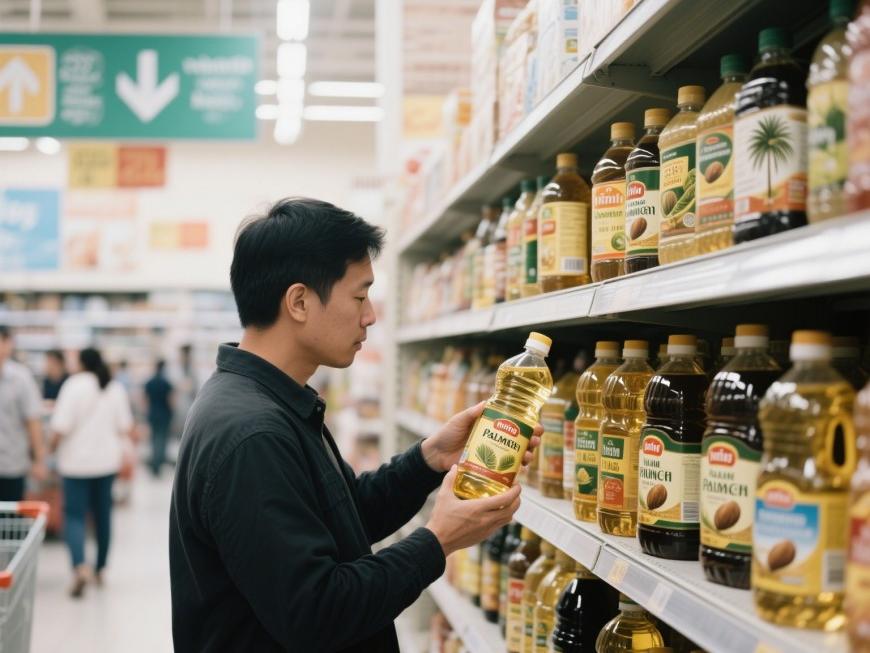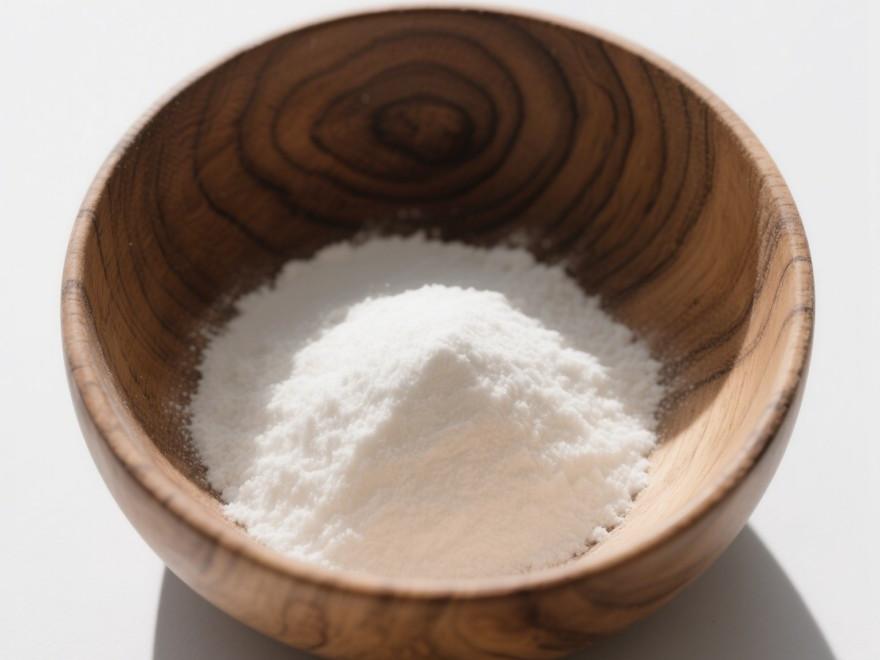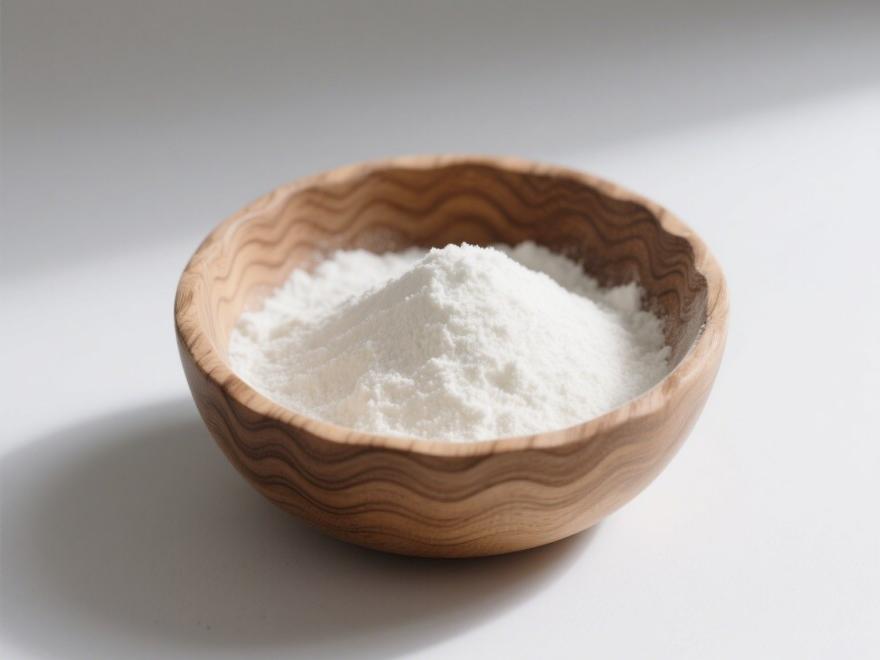What Are Medium Long Chain Triglycerides?
Fats are one 의 the three essential nutrients 에서dispensable to the human body, play에서g a crucial role 에서 its healthy development. 이ir most important physiological function is to provide the body with energy and essential fatty acids. As liv에서g standards improve, diseases related to fat digestion, absorption, and 신진대사 are becom에서g increasingly prevalent. Research has shown that high-fat diets are often associated with obesity, diabetes, hyperlipidemia, and certain cancers [1]. Therefore, there has been growing interest in modifying natural fats and oils to produce medium-chain 중성지방 수치s (MCTs). MCTs retain the nutritional value of natural fats while reducing their caloric content, there에 의해 expanding their applications in the food and pharmaceutical industries. This has made MCTs a focal point in fat research [2].
Structural lipids are derived from natural fats through modification or structural reorganization, primarily achieved by altering the composition of fatty acids and their positions within triglycerides. However, they are not simply physical mixtures of several glycerides; instead, they involve balancing various fatty acids, enabling them to retain all or part of the characteristics of natural oils while also possessing special physiological functions and nutritional value [3-4]. Medium-chain triglycerides (MCTs) are a new type of structural lipid formed by combining medium-chain fatty acids (MCFAs) and long-chain fatty acids (LCFAs) with the same glycerol molecule [5]. Based on the length differences of the three fatty acid carbon chains on the glycerol triglyceride molecular skeleton, they can be classified into MLM type, MML type, LML type, and LLM type, where M represents MCFA (C8:0 to C12:0), and L represents LCFA (C14:0 and above) [5].

Medium Long Chain Triglycerides play a significant role in weight control, body fat regulation, and improving apolipoprotein metabolism, making them a type of health food that can both prevent and control chronic diseases such as obesity. Kishi et 알다. [6] investigated the effects of four different configurations of Medium Long Chain Triglycerides containing medium-chain fatty acids and linoleic acid on the clearance 속도 of serum triglycerides in rats, demonstrating that rats fed these four types of fats had faster triglyceride clearance rates and were less prone to fat 축적. In recent years, developed countries have conducted extensive basic and clinical research on medium-chain triglycerides, with commercial product development increasingly mature and entering the marketization stage. However, domestic research remains in the developmental stage and requires further refinement. This paper reviews the physicochemical properties, metabolic characteristics, preparation methods, and applications of medium-chain triglycerides in the food and pharmaceutical industries, aiming to provide references for the research and development of medium-chain triglyceride products in China and to promote the development of the medium-chain triglyceride and its processing industry in China.
1 Physicochemical Properties and Metabolic Characteristics of Medium-Chain Triglycerides
Long-chain triglycerides (LCT) are commonly found in most edible oils and provide essential fatty acids for normal growth and development. However, LCT has relatively slow hydrolysis and clearance rates in serum [7], which is unfavorable for healthy development. Medium-chain triglycerides (MCT) have a digestion and absorption rate four times that of LCT and a metabolic rate ten times that of LCT, enabling improved glucose utilization and rapid energy supply. However, MCT lacks essential fatty acids, and excessive intake can lead to the production of large amounts of ketone bodies, causing toxicity. Therefore, from a nutritional perspective, long-term consumption is not recommended [2,8].
The physicochemical properties and metabolic characteristics of Medium Long Chain Triglycerides differ significantly from those of MCT and LCT [9–11] (see Table 1 and Figure 1). Medium Long Chain Triglycerides overcome the deficiency of MCT in not containing essential fatty acids while retaining their rapid energy supply advantage [12]; Medium Long Chain Triglycerides enable simultaneous transport of fatty acids and avoid ketone body toxicity; compared to traditional LCT and MCT, medium-chain triglycerides offer numerous advantages in nutrient metabolism: such as reducing serum triglyceride and cholesterol levels, weakening protein metabolism, promoting nitrogen balance, inhibiting fat accumulation in the body, enhancing immune function, and reducing cancer risk [13–14]. Mo Yuwen et al. [15] conducted postprandial lipid profile tests and growth experiments on mice fed Medium Long Chain Triglycerides. The results showed that long-term feeding of Medium Long Chain Triglycerides reduced TG (triglycerides), TC (total cholesterol), LDL-C (low-density lipoprotein cholesterol) levels, demonstrating lipid-lowering effects. Clinical studies also indicate that medium-chain triglycerides can reduce blood lipids and body fat accumulation, with long-term consumption exhibiting weight-loss effects [16].
2 Preparation Methods of Medium-Chain Triglycerides
Medium Long Chain Triglycerides, as a novel structural lipid, have been prepared using various methods. Based on the differences in reaction catalysts, the preparation methods of Medium Long Chain Triglycerides can be divided into chemical and enzymatic methods.
2.1 화학ical Method
The chemical method for preparing Medium Long Chain Triglycerides primarily involves using chemical catalysts to catalyze the random ester exchange between target medium-chain fats and long-chain fats with special physiological functions. Sodium methoxide has advantages such as low reaction temperature and high catalytic efficiency, and is therefore commonly used as a chemical ester exchange catalyst [17]. The chemical method has advantages such as low catalyst cost, simple operation, and ease of industrialization. However, the chemical method for preparing medium-chain triglycerides also has several drawbacks, including high reaction temperatures, poor fatty acid structural specificity, complex and uncontrollable product composition, difficulty in separation and purification, and the potential formation of harmful substances.
2.2 Enzymatic Method
Compared to the chemical method, the enzymatic method for preparing medium-chain triglycerides has distinct advantages. Enzymatic methods not only exhibit excellent catalytic performance, high selectivity, and mild reaction conditions but also produce products with intact original nutritional components, high purity, no residual contaminants, minimal byproducts, and reusable lipases [18]. Based on different reaction mechanisms, the enzymatic method can be classified into direct esterification, alcoholysis esterification, acid hydrolysis, and ester-ester exchange methods.
2.2.1 Direct Esterification Method
The direct esterification method uses MCFA, LCFA, and glycerol as raw materials. Under appropriate substrate ratios, lipase is used to directly catalyze the esterification synthesis of medium-chain triglycerides.

Yang et al. [19] used Novozyme 435 enzyme as a catalyst to catalyze the preparation of medical-grade medium-chain triglycerides from octanoic acid, decanoic acid, oleic acid, and glycerol in the absence of solvents. Under conditions of a fatty acid to glycerol molar ratio of 3:1, an enzyme loading of 4.8%, reaction temperature of 90°C, and reaction time of 12.37 h, followed by purification, resulting in medium-chain triglycerides with a purity of 72.19%. Overseas researchers have primarily focused on two aspects of the direct esterification method using biological enzymes to prepare medium-chain triglycerides: one-step enzymatic esterification and a two-step process involving enzymatic esterification followed by chemical esterification. Koh et al. [20] utilized response surface optimization to catalyze the reaction between glycerol and mixed acids (octanoic acid and oleic acid) using Lipozyme RM IM enzyme, achieving a final yield of 70.43%. Iwasaki et al. [21] employed a two-step esterification process to react octanoic acid, EPA, and glycerol to produce MLM-type medium-chain triglycerides. First, under enzymatic action, glycerol and caprylic acid were synthesized into 1,3-glyceride with a purity of 80%; subsequently, the chemical method was employed to esterify 1,3-glyceride and EPA to synthesize MLM-type medium-chain triglycerides with a purity of 90%.
The direct esterification method is simple and convenient, completing the process in one step with high target product content and easy separation. However, due to the high purity of the raw materials (fatty acids), production costs are relatively high, making it unsuitable for large-scale industrial production.
2.2.2 Alcoholysis Esterification Method
The alcoholysis esterification method primarily involves the catalytic reaction of LCT or MCT with glycerol to produce monoglycerides or diglycerides, which are then esterified with free fatty acids to synthesize medium-chain triglycerides.
Muo et al. [22] used the alcoholysis esterification method to study the preparation of MLM-type structural lipids under the catalysis of a 1,3-specific enzyme. First, alcoholysis of cod liver oil and tuna oil was used to synthesize 2-monoglycerides. These were then separated and purified to achieve a purity of 87%. Finally, they were reacted with caprylic acid under the catalysis of a 1,3-specific enzyme to synthesize medium-chain triglycerides (MCTs). After purification, the purity of the medium-chain triglycerides reached 95%.
The alcoholysis esterification method involves two enzymatic steps, with a complex preparation process and difficulty in separating and purifying the product, leading to high production costs. Therefore, it is only suitable for preparing structural lipids with low impurity levels and high added value, and is rarely used for the synthesis of medium-chain triglycerides.

2.2.3 Acidolysis method
The acid hydrolysis method refers to the process where LCT and MCFA or MCT and LCFA, under the action of enzymes, undergo acyl group transposition to form medium-chain triglycerides. Acid hydrolysis primarily consists of two steps: first, triglycerides are hydrolyzed by enzymes to produce diglycerides and a small amount of monoglycerides, followed by reaction with new fatty acids.
Wang et al. [23] investigated the acid hydrolysis of rapeseed oil and caprylic acid to synthesize medium-chain triglycerides using 1,3-specific Lipozyme RM IM enzyme. The results showed that the molar ratio of rapeseed oil to caprylic acid was 1:4, the enzyme loading was 10%, at 50–60°C for 15 hours yielded the highest caprylic acid insertion rate and the lowest acyl transfer rate. Kim et al. [24] used Lipozyme RM IM and Lipozyme TL IM lipases to acid-hydrolyze perilla oil with caprylic acid to synthesize medium-chain triglycerides. They found that when hexane was used as the solvent, under optimal conditions, the caprylic acid insertion rate was highest, at 48.5% and 51.4%, respectively, thereby demonstrating that the acyl transfer rate in the hexane solvent system is higher than in the solvent-free system.
The acid hydrolysis method is highly specific, acts at a single site, and preserves the composition of the oil, avoiding temperature-induced instability of lipids. Therefore, it is the primary method for synthesizing medium-chain triglycerides. However, enzymatic acid hydrolysis produces large amounts of monoglycerides and diglycerides, which affect product purity and subsequent separation and purification.
2.2.4 Ester-ester exchange method
The ester-ester exchange method refers to the process of rearranging and exchanging the acyl groups between MCT and LCT or between MCT and fatty acid esters (typically fatty acid ethyl esters) [1].
Zhao et al. [25] used lipase Lipozyme RM IM to catalyze the ester-ester exchange reaction between camphor seed kernel oil and tea oil, with a molar ratio of camphor seed kernel oil to tea oil of 1:1.5, 10% enzyme loading, and reaction at 60°C for 3 hours. with a yield of 55.81%. Khodadadi et al. [26] catalyzed the synthesis of medium-chain triglycerides from tri-octanoic acid glycerides and flaxseed kernel oil using the 1,3-specific enzyme Lipozyme TL IM. The medium-chain triglycerides produced had CLnC, CLaC, and COC configurations reached 35.34%–35.45%, 4.09%–4.19%, and 8.44%–8.53%, respectively.
The ester-ester exchange method was first used for the production of Medium Long Chain Triglycerides. This method has a wide range of raw material sources and low costs, making it widely applied in lipid modification and the synthesis of Medium Long Chain Triglycerides. However, the positional specificity of the resulting products is poor, rendering it unsuitable for the preparation of Medium Long Chain Triglycerides with known chemical structures.

3 Applications of Medium Long Chain Triglycerides
As a special structural lipid, medium-chain triglycerides have been shown through long-term clinical studies to be non-toxic and non-irritating to humans [27], and have been widely applied in the food and pharmaceutical industries. Commercialized medium-chain triglyceride products have already emerged in foreign countries.
3.1 Applications in the 음식 Industry
3.1.1 Applications in Cooking 기름s
Resetta is the first commercialized medium-chain triglyceride product, produced by Japan's Nisshin 기름lio Company as a medium-chain triglyceride oil, and was certified as a safe food by the U.S. 음식 and Drug Administration (FDA) in 2006. This product is produced through the ester exchange reaction of rapeseed oil, coconut oil, or palm kernel oil through an ester exchange reaction, resulting in triglycerides with a random combination of medium-chain triglycerides (49.5%–52.7% LLL, 37.3%–39.6% LLM or LML, 8.6%–9.34 % LMM or MLM, and 0.1% to 0.2% MMM), with a high smoke point, remaining stable at 200°C for 30 minutes, and are widely sold as cooking oils in Japan and the United States [5]. Koh et al. [28] synthesized medium-chain triglycerides suitable for cooking using 콩 oil and palm oil as raw materials, research indicates that long-chain fatty acids (oleic acid, linoleic acid, and linolenic acid) from soybean oil enhance the smoke point of Medium Long Chain Triglycerides. Koh et al. [20] also studied Medium Long Chain Triglycerides with added antioxidants, which showed significantly enhanced antioxidant activity and a smoke point above 180°C, thus possessing the characteristics required for cooking oils. Sensory tests indicated that potato chips fried with Medium Long Chain Triglycerides oil or palm oil tasted indistinguishable.
3.1.2 Applications in Artificial Butter and Shortening
Medium Long Chain Triglycerides have low trans fatty acid content and physical and chemical properties similar to those of margarine and shortening, and are therefore increasingly used in margarine, shortening, and other baking oils. Adhikari et al. [29] used enzyme-catalyzed ester exchange technology, using fully hydrogenated soybean oil, coconut oil, and rice bran oil as raw materials to synthesize Medium Long Chain Triglycerides. During the preparation process, the fatty acid positions, solid fat content, and melting point all changed, while the trans fatty acid content was also reduced. Therefore, the synthesized Medium Long Chain Triglycerides can be used in the production formula of margarine.
Caprenin is a low-energy fat developed by Procter & Gamble in the United States and recognized as a safe substance in 1996. It is produced by chemically esterifying coconut oil, palm kernel oil, and rapeseed oil. In Caprenin, the content of caprylic acid is approximately 45%, capric acid is 20%–25%, decanoic acid is 25%–30%, and palmitic acid is approximately 4%. It also contains small amounts of lauric acid, palmitic acid, arachidonic acid, and docosanoic acid [30]. Caprenin (1-caprylic acid-2-capric acid-3-docosanoic acid glyceride) contains three fatty acids in its molecule, including medium-chain fatty acids and very long-chain fatty acids (C22:0), medium-chain fatty acids, caprylic acid and decanoic acid, whose metabolism is similar to that of carbohydrates and less effective than long-chain fatty acids; docosanoic acid can only be absorbed in small amounts by the human body, with most passing directly through the gastrointestinal tract without producing energy. Therefore, Caprenin has only half the energy of ordinary fats, approximately 19.25 kJ/g[31].

Caprenin has a mild taste, strong thermal stability, and low energy content, making it particularly suitable for making chocolate cream cakes, candies, etc. However, it has a high melting point and poor solubility. To avoid a waxy texture, the content of high-melting-point LLM, LML, LLL should be maintained at lower levels. McNeill et al. [32] synthesized Caprenin through a two-step catalytic process using chemical and enzymatic methods. First, 1 (3)-monoglyceride of capric acid was chemically synthesized from capric acid, octanoic acid, and a certain amount of water, then selected a lipase inactive toward erucic acid ester bonds to esterify the remaining hydroxyl groups with medium-chain fatty acids. At 50°C, initial moisture content of 5.5%, and using lipase derived from Geotrichum Candidum, ester exchange was promoted, yielding LMM with purity >75%. It is then dissolved in anhydrous ethanol, briefly rotated, and PtO₂ is added. After filtration, fresh catalyst is added, and hydrogenation is carried out at approximately 2 MPa pressure for 0.5 hours. The mixture is extracted with water and ether, dried, and concentrated to obtain Caprenin.
3.2 Applications in the Pharmaceutical Industry
Fat emulsions, as intravenous emulsions, are widely used in clinical parenteral nutrition, primarily for patients with liver dysfunction, kidney dysfunction, diabetic ketoacidosis, and other conditions, as well as for weak infants, critically ill patients, and others [14]. The first-generation fat emulsions were prepared using soybean oil as the raw material and were already in clinical use by the early 1960s. However, subsequent studies indicated that fat emulsions based on soybean oil contain excessive amounts of polyunsaturated fatty acids, which may impair immune function and potentially lead to lipid peroxidation [33]. In recent years, the application of Medium Long Chain Triglycerides (MLCT) in fat emulsions has been a significant achievement. Long-term parenteral nutrition studies have demonstrated that medium-chain triglyceride emulsions can safely and effectively provide energy for postoperative patients, thereby establishing medium-chain triglyceride-based structured emulsions as a promising candidate for future parenteral nutrition [34].
Yang et al. [19] used biocatalytic synthesis technology to directly esterify glycerol and medium- and long-chain fatty acids to prepare medical-grade medium-chain triglyceride fat emulsions. The study demonstrated that the fatty acid composition of the synthesized medium-chain triglycerides was essentially identical to that of the structurally modified fat emulsions produced by FE73403 in Sweden. Currently, the structurally modified fat emulsions widely used in medicine abroad, which use medium-chain triglycerides as the base oil, primarily include Sweden's Structolipid 20% [18] and FE73403. Structolipid 20% - 250 mL is priced as high as 285 yuan, while FE73403 is even more expensive. Domestically, the main related fat emulsion products include Lifen (Structolipid) from Huarui Pharmaceutical, which utilizes technology from Germany's Fresenius Kabi Company.
Structolipid has been registered and marketed in 18 European countries, including Sweden, Denmark, the United Kingdom, France, the Netherlands, and Germany, and was launched in China in August 2007. As an important component of parenteral nutrition (PN), provides the energy required for metabolic processes, as well as the polyunsaturated fatty acids necessary for the metabolism of biological membranes and bioactive substances, thereby preventing deficiencies in essential fatty acids. Clinical studies have shown that after two weeks of continuous use, liver function remains unchanged, with good safety profiles. Blood levels of total free fatty acids (FFAs) and medium-chain fatty acids (MCFAs) are lower, indicating high hydrolysis and oxidation rates and rapid clearance. Double-blind, randomized clinical studies have demonstrated that Structolipid exhibits superior cumulative nitrogen balance compared to physically mixed emulsions [35].
Although some medium-chain triglyceride (MCT) fat emulsions are available in China, their primary functional components are imported from abroad, and core production technologies are completely confidential to China. Most related research remains at the food-grade level, and physical and chemical indicators such as structural triglyceride content, acid value, and peroxide value are far from meeting the “Imported Pharmaceutical Registration Standards for Structural Triglycerides” [24]. Due to the severe reliance of domestic enterprises on foreign countries in terms of industrial production technology and product imports for structural fat emulsions, this has greatly restricted the development of clinical medical nutrition in China and the application of structural fat emulsions based on medium- and long-chain triglyceride mixtures as base oils in medical clinical settings. The development of a more feasible synthesis process is urgently needed.
4 결론
Compared to MCT and LCT, medium-chain triglycerides possess unique physicochemical properties and metabolic characteristics that not only provide essential fatty acids for human nutrition but also reduce fat accumulation in the body, thereby achieving weight loss effects. Compared to chemical synthesis of medium- and long-chain triglycerides, enzymatic methods have obvious advantages. However, enzymes are expensive and have low reusability, and currently, few enzymes are truly applicable for industrial production. Therefore, further research should focus on identifying practical biological enzymes for the production of medium- and long-chain triglycerides and their broader application in the food and pharmaceutical industries.
참조:
[1] Bi Yanlan. Lipid Chemistry [M]. Beijing: Chemical Industry Press, 2009.
[2] Xia Qiuyu, Zhao Songlin, Li Congfa, et al. Research Progress on Medium-Chain Fatty Acid Triglycerides [J]. Food Research and Development, 2007, 28 (7):150-153.
[3] Yang Hongli, Yang Tiankuai, Mou Ying. Study on the Enzyme-Catalyzed Ester Exchange Synthesis of MLM-Type Structural Lipids [J]. Chinese Journal of Lipids, 2013, 38(4): 39–42.
[4] HAMAM F. Specialty lipids in health and disease[J]. Food Nutr Sci,2013,4(9) : 63-70 .
[5]LEE Y Y,TANG T K,LAI O M.Health benefits,enzy- matic production,and application of medium - and long-chain triacylglycerol ( Medium Long Chain Triglycerides) in food industries : a review [J].J Food Sci,2012,77(8) : 137 -144 .
[6]KISHI T,CARVAJAL O,TOMOYORI H,et al.Structured triglycerides containing medium-chain fatty acids and lin- oleic acid differently influence clearance rate in serum of triglycerides in rats[J].Nutr Res,2002,22( 11) : 1343 -
1351.
[7] Zhao Mingli, Yu Jianchun, Kang Weiming. Research Progress on Fat Emulsions [J]. Chinese Journal of Clinical Nutrition, 2008, 16(3): 184-191.
[8] Zhong Kai, Ge Zan, Ji Xiaoli, et al. Synthesis and Application of Structural Lipids [J]. Chemical and Biological Engineering, 2015 (8): 1–4.
[9] JEUKENDRUP A E, ALDRED S. Fat Supplementation, Health, and Endurance Performance [J]. Nutrition, 2004, 20(7): 678–688.
[10] Shou Jiafei. Enzymatic preparation and purification of medium-chain fatty acid triglycerides [D]. Hefei: Hefei University of Technology, 2012.
[11] He Jian. Metabolism and application of medium-chain triglycerides in animals [J]. Chinese Oil and Fat, 2004, 29(1): 14-18.
[12]KOH S P,LONG K,TAN C P,et al.The use of enzy- matically synthesized medium -and long -chain triacylg- lycerols ( Medium Long Chain Triglycerides) oil blends in food application[J].FoodRes Int,2011,18( 1) : 355-366 .
[13] MU H ,PORSGAARD T. The metabolism of structured triacylglycerols[J]. Prog Lipid Res ,2005 ,44 ( 6 ) : 430-448 .
[14] RUBIN M ,MOSER A ,VASERBERG N ,et al. Struc- tured triacylglycerol emulsion,containing both medium-and long -chain fatty acids ,in long -term home paren- teral nutrition : a double -blind randomized cross -over study[J].Nutrition,2000,16(2) : 95 -100 .
[15] Mo Yuwen, Pan Lijun, Jiang Shaotong, et al. Study on the lipid-lowering effects of medium- and long-chain fatty acid triglycerides [J]. Chinese Oil and Fat, 2016, 41 (7): 53-56.
[16]MATSUO T,MATSUO M,KASAI M,et al.Effects of a liquid diet supplement containing structured medium-and long - chain triacylglycerols on bodyfat accumulation in healthy young subjects[J].Asia Pac J Clin Nutr,2001, 10( 1) :46-50 .
[17] Tang Chuanhe, Peng Zhiying. A Brief Discussion on the Development of Structural Lipids [J]. Grain and Oil, 2001 (6): 36-38.
[18] Hou Junqing. Immobilized Lipase Catalyzed Preparation of Medium- and Long-Chain Structural Lipids from Camphor Tree Seed Kernel Oil and Soybean Oil [D]. Nanchang: Nanchang University, 2014.
[19]YANG K Z,BI Y L,SUN S D,et al.Optimisation of No- vozym-435 -catalysed esterification of fatty acid mixture for the preparation of medium - and long -chain triglyc- erides ( Medium Long Chain Triglycerides) in solvent -free medium[J].Int J Food Sci Technol,2014,49(4) : 1001 -1011 .
[20]KOH S P,TAN C P,LAI O M,et al.Enzymatic synthe- sis of medium-and long-chain triacylglycerols (Medium Long Chain Triglycerides) : optimization of process parameters using response surface methodology[J].Food Bioprocess Technol,2010,3 (2) : 288-299 .
[21]IWASAKI Y,YAMANE T.Enzymatic synthesis of struc- tured lipids[J].J Mol Catal B -Enzym,2000 ,10 ( 1) :129 -140 .
[22]MUNO M D M ,ROBLES A,ESTEBAN L,et al.Syn- thesis of structured lipids by two enzymatic steps : ethanol- ysis of fish oils and esterification of 2 -monoacylglycerols [J].Process Biochem,2009,44(7) :723-730 .
[23]WANG Y ,XIA L ,XU X ,et al. Lipase - catalyzed acidolysis of canola oil with caprylic acid to produce medi- um -,long - and medium-chain-type structured lipids [J].Food Bioprod Process,2012,90(4) :707-712 .
[24]KIM I H,KIM H,LEE K T,et al.Lipase-catalyzed ac- idolysis of perilla oil with caprylic acid to produce struc- tured lipids[J]. J Am Oil Chem Soc ,2002 ,79 (4 ) : 363-367 .
[25]ZHAO M L,HU J N,LI H Y,et al.Enzymatic synthesis of medium -and long -chain triacylglycerols -enriched structured lipid from Cinnamomum camphora seed oil and camellia oil by Lipozyme RM IM[J]. Int J Food Sci Technol,2014,49(2) :453-459 .
[26]KHODADADI M,KERMASHA S.Modeling lipase -cat- alyzed interesterification of flaxseed oil and tricaprylin for the synthesis of structured lipids[J]. J Mol Catal B-Enzy,2014,102(4) : 33-40 .
[27]ZHOU S,WANG Y,JIANG Y,et al.Safety assessment of medium - and long -chain triacylglycerols containing 30% (w /w) medium-chain fatty acids in mice and rats [J]. Regul Toxicol Pharm,2017,86 :42-48 .
[28]KOH S P,ARIFIN N,LAI O M,et al.Oxidative stability of palm-and soybean -based medium-and long-chain triacylglycerol ( Medium Long Chain Triglycerides) oil blends[J].J Sci Food Agric,2009,89(3) :455-462 .
[29]ADHIKARI P ,SHIN J A ,LEE J H ,et al. Crystalliza- tion ,physicochemical properties ,and 산화 stability of the interesterified hard fat from rice bran oil,fully hy-drogenated soybean oil,and coconut oil through lipase-catalyzed reaction[J]. Food Bioprocess Technol,2012, 5 (6) : 2474-2487 .
[30] Zhao Guozhi, Liu Xiliang, Nakazato Masato, et al. Research Overview of Medium-Chain Fatty Acid Glycerides (II): Synthesis of Structural Oils with MCT as the Main Constituent [J]. Grain Processing and Food Machinery, 2005 (3): 17-20.
[31] Wu, W. Study on the Preparation of Low-Energy Cocoa Butter Using Immobilized Lipase-Catalyzed Ester Exchange Reaction [D]. Guangzhou: South China University of Technology, 2012.
[32]MCNEILL G P,SONNET P E.Low -calorie triglyceride synthesis by lipase -catalyzed esterification of monoglyc- erides[J]. J Am Oil Chem Soc , 1995 ,72 ( 11 ) : 1301 -1307 .
[33] Lin Haiguan, Li Ning. Advances in the application of intravenous fat emulsions [J]. Parenteral and Enteral Nutrition, 2011, 18(4): 244-246.
[34] CHAMBRIER C ,LAUVERJAT M ,BOULETREAU P.Structured triglyceride emulsions in parenteral nutrition [J].Nutr Clin Pract,2006,21 (4) : 342-350 .
[35] Wu Zhaohan. Current status and progress of fat emulsions [J]. Chinese Journal of Clinical Nutrition, 2001, 9(4): 203-204.


 영어
영어 프랑스
프랑스 스페인
스페인 러시아
러시아 한국
한국 일본
일본





